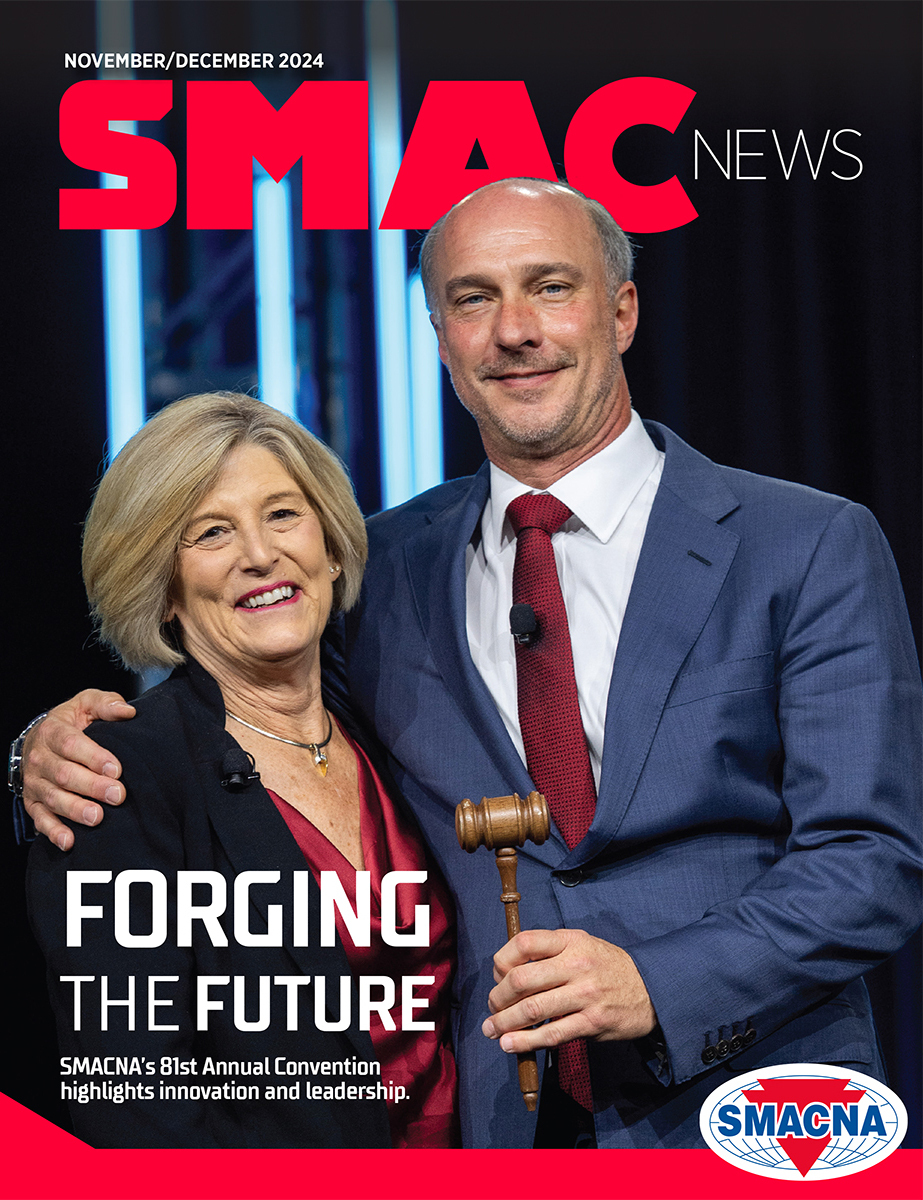Building a Leadership Culture in Your Residential HVAC Business
Empower your team, reduce turnover and drive growth with a distributed leadership model that fosters employee engagement and long-term success.
 Building a strong leadership culture in your residential HVAC business is essential for long-term success and growth. Stephen English, a leadership expert who delivered a TEDx talk on the subject and spoke at Partners in Progress, highlights the critical role leadership plays in engaging employees, driving productivity and boosting profitability. In his work, he emphasizes the importance of a distributed leadership model, where decision-making is shared across the organization, empowering individuals at all levels.
Building a strong leadership culture in your residential HVAC business is essential for long-term success and growth. Stephen English, a leadership expert who delivered a TEDx talk on the subject and spoke at Partners in Progress, highlights the critical role leadership plays in engaging employees, driving productivity and boosting profitability. In his work, he emphasizes the importance of a distributed leadership model, where decision-making is shared across the organization, empowering individuals at all levels.
According to English, the current landscape is marred by a “leadership crisis,” with two out of three employees actively disengaging from their everyday work, according to a recent Gallup poll. This active disengagement could cost the U.S. economy a staggering $1 trillion annually as disengaged employees significantly impact productivity and overall economic output due to their lack of motivation and commitment to their work. As English explains, “We need to coach and correct our employees as leaders.”
For residential HVAC business owners, this means building a leadership culture where everyone — from technicians to office staff — feels empowered to make decisions and take ownership of their roles. And it also means that leaders who use clear communication, recognition and support for employee development can significantly improve engagement levels.
The Business Case for Leadership Development
The benefits of building a leadership culture are clear. Companies with high-quality leadership see a 17% increase in productivity, and those in the top 25% of leadership cultures achieve 70% higher earnings, according to 2024 Gallup poll data. The cost of turnover is another major factor: English notes that the Society for Human Resource Management predicts that every time a business replaces a salaried employee, it can cost six to nine months of their average salary. For an employee making $60,000 a year, that’s $30,000 to $45,000 in recruiting and training expenses. However, replacement costs vary by wage and role of the employee.
A 2022 Amazon and Workplace Intelligence survey found that 74% of millennial and Gen Z employees are likely to quit within one year due to a lack of skills development opportunities. That's why creating a culture prioritizing leadership development can help retain talent.
Leadership development also offers a significant return on investment. Dr. Paul Leone, Ph.D., has shown that for every dollar spent on leadership development, companies see a $4 return. That's a 400% return on investment, making it clear why building a leadership culture should be a top priority for business owners.
Empowerment and Distributed Leadership
One key component of a leadership culture is empowerment. English stresses that leadership is not just for those at the top of the organizational chart. In a distributed leadership model, every employee has the potential to be a leader. For example, front-line HVAC technicians may not have "leader" in their job title, but by identifying and solving problems on the spot, they exhibit leadership behaviors.
English draws an analogy to the Apollo 11 lunar mission, where a 1202 error appeared as Neil Armstrong and Buzz Aldrin were just 30,000 feet above the moon's surface. Instead of relying solely on the mission commander, they radioed Mission Control for assistance, where a team of engineers, including a young expert, provided the critical information needed to disregard the error and proceed with the landing. English asks, “Do you have that trust in your organization? Do you trust your younger or less-experienced employees to spot problems and find solutions?”
In a leadership culture, decision-making is quick and consultative, with values-based outcomes. This allows companies to respond swiftly to challenges, fostering a culture where employees are empowered to make decisions within their roles. As English puts it, “Transformation plus changes equals inspiration,” highlighting the need for constant improvement and adaptation.
Building Leadership Capabilities
Developing leaders within your HVAC business requires an intentional, ongoing process. English suggests several strategies for leadership development, including micro-learning platforms, mentorship programs, job rotations and group coaching. These initiatives help employees build the skills and confidence needed to take on leadership roles, ensuring your business has a strong pipeline of future leaders.
English also highlights the importance of measuring leadership effectiveness. “What gets measured gets improved,” he says, quoting management expert Peter Drucker. Tools like Gallup's Q12 engagement survey, 360-degree reviews and anonymous pulse checks can provide valuable insights into how your employees feel about your organization's leadership. Companies that invest in measuring and improving leadership culture see tangible benefits, including 37% less absenteeism, 48% fewer safety incidents and 22% higher profitability, says Gallup poll data.
Vision for the Future
Creating a leadership culture in your HVAC business is not just about immediate results but long-term sustainability. English encourages business owners to envision what their teams will look like in five years. In a thriving leadership culture, employees actively develop new skills, take advantage of growth opportunities and contribute to the company’s success.
“Leadership is not about being in charge; it's about taking care of those in your charge,” English says, quoting Simon Sinek, a business leadership author and speaker. By fostering a culture where an owner distributes leadership opportunities and empowers employees, HVAC businesses can improve their bottom lines and create more engaged, motivated workforces, driving productivity, retaining talent and ensuring long-term success.
Published: January 9, 2025
IN THIS ISSUE
A ‘Critical’ Project For Community Health
Arctic Sheet Metal of Portland, Oregon, installed architectural panels for a new cancer center, bringing more health resources to the residents of Clackamas County.
Building a Leadership Culture in Your Residential HVAC Business
Empower your team, reduce turnover and drive growth with a distributed leadership model that fosters employee engagement and long-term success.
Cleared For Takeoff
SMACNA member Xcel Mechanical is tackling the HVAC and sheet metal work for an expansion project at Los Angeles International Airport that uses a novel construction technique.
Onward Into 2025
Coming off a wonderful SMACNA Annual Convention, there is a lot of energy around the SMACNA office.
Riding the Wave of Industrial Growth
These trends are driving the future of industrial climate control.
SMACNA CONVENTION: FORGING THE FUTURE
SMACNA's 81st Annual Convention highlights innovation and leadership. In the heart of Palm Desert, California, the Sheet Metal and Air Conditioning Contractors’ National Association (SMACNA) recently hosted its 81st Annual Convention, bringing
SMACNA Is Your Association
Thank you for trusting me to serve as SMACNA’s President.


